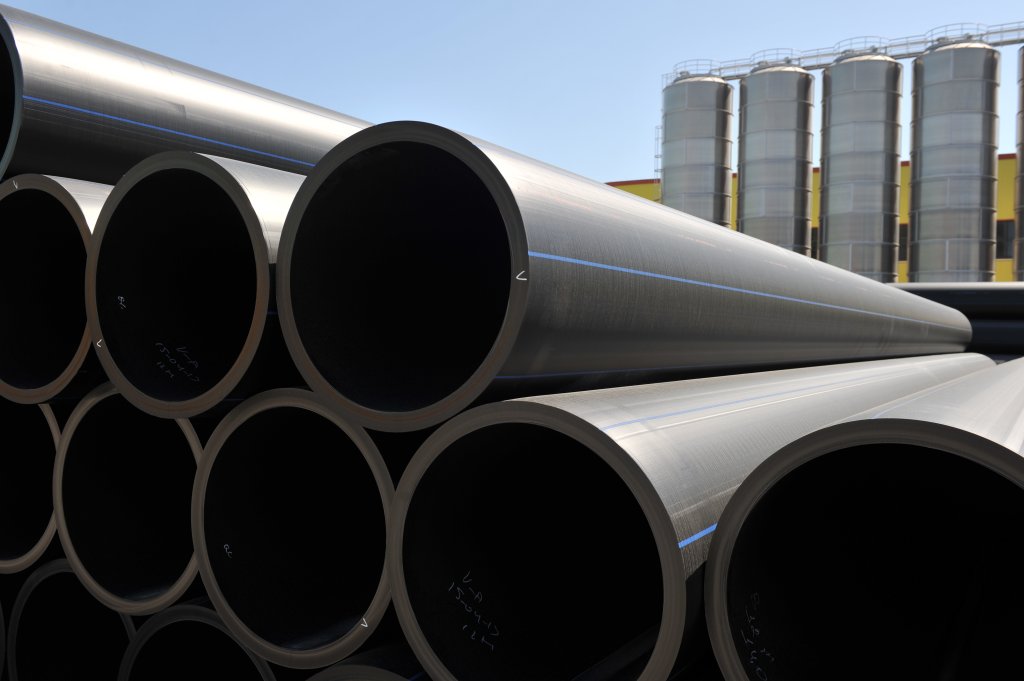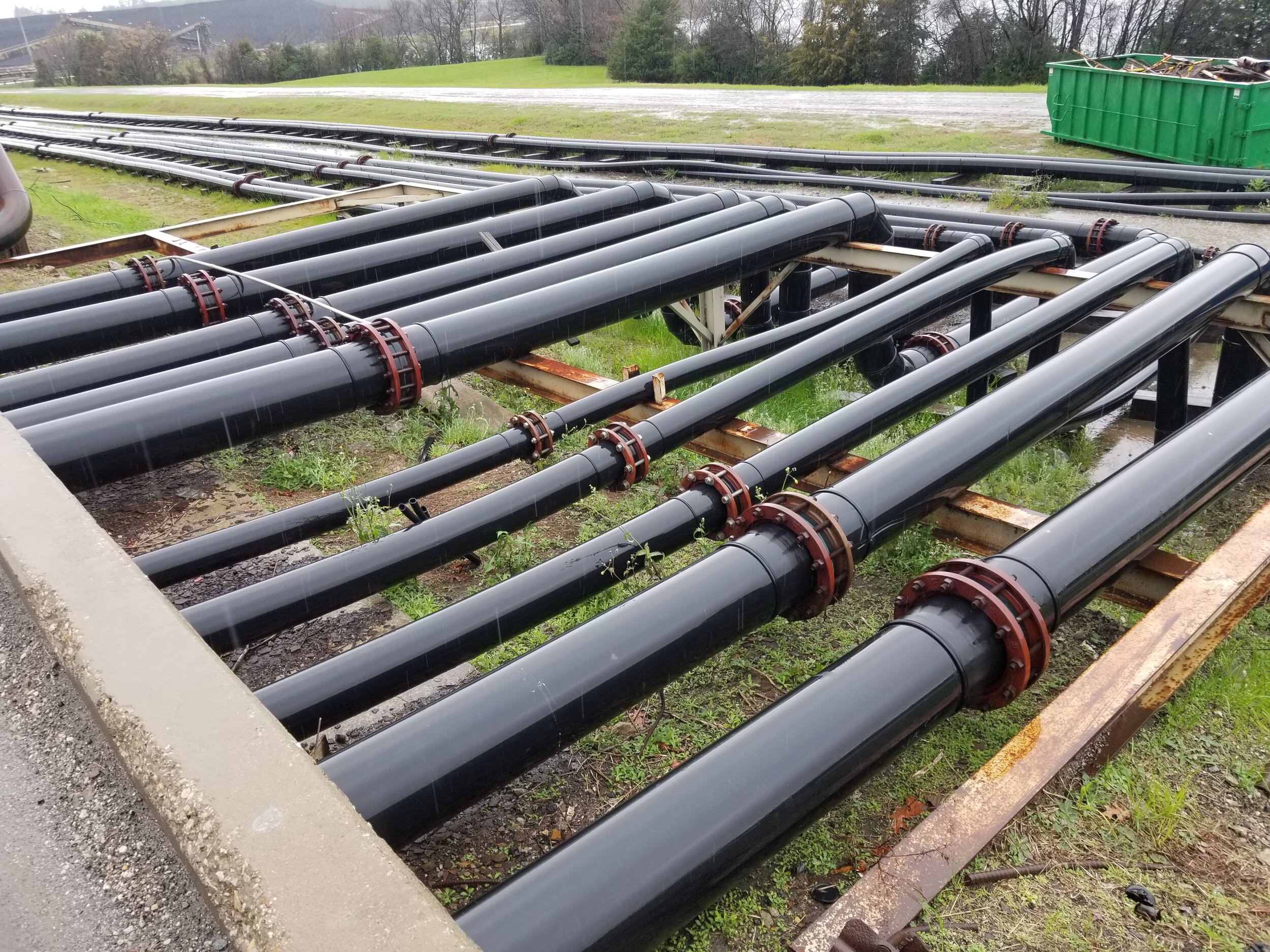How hdpe pipe suppliers Midland TX Are Enhancing Agriculture
Explore the Production Refine Behind High-Quality HDPE Pipeline and Its Applications
The production process of premium HDPE pipes is elaborate and methodical. It begins with the selection of basic materials that enhance performance. Following this, ethylene goes through polymerization to develop material, which is after that formed with extrusion. Quality assurance is extremely important, making certain that the end product satisfies strict requirements. Nonetheless, the trip of HDPE pipelines doesn't finish with production. Their applications across different markets disclose a broader relevance worth taking a look at.
Recognizing HDPE: Characteristics and Advantages

High-density polyethylene (HDPE) is a functional polycarbonate understood for its longevity and resistance to different ecological factors. This material exhibits superb tensile toughness, making it appropriate for demanding applications. Its low-density framework adds to a lightweight product, helping with ease of managing and installment. HDPE additionally showcases exceptional resistance to chemicals, which lessens deterioration when revealed to extreme compounds.
The product's low dampness absorption better enhances its long life, making it suitable for use in pipelines and storage containers. Additionally, HDPE is immune to ultraviolet (UV) radiation, ensuring that products keep their integrity even when subjected to sunlight. Its flexibility allows for the development of intricate forms without endangering toughness. The environmentally friendly nature of HDPE, usually obtained from recycled materials, contributes to its charm, promoting lasting techniques in manufacturing. On the whole, these residential properties and advantages make HDPE a favored choice for various industrial and consumer applications.
Raw Product Selection for HDPE Production
The option of raw products for HDPE production is necessary to verify the end product meets the desired requirements and high quality criteria. High-density polyethylene (HDPE) is mainly generated from polymerized ethylene, stemmed from nonrenewable fuel sources such as gas or petroleum. The high quality of these feedstocks substantially influences the mechanical and thermal properties of the final HDPE.
Ingredients likewise play a substantial duty in improving HDPE's performance, including anti-oxidants, UV stabilizers, and colorants, which improve resilience and resistance to ecological elements. The selection process have to consider not just the chemical structure of the raw materials but additionally their processing qualities to ensure reliable production.
The sourcing of raw materials should focus on sustainability and compliance with ecological regulations, as accountable methods are imperative in today's market. Ultimately, mindful raw product selection lays the structure for generating premium HDPE pipelines ideal for varied applications.
The Extrusion Process: Forming HDPE Pipeline
The extrusion process plays an important role fit HDPE pipes, starting with thorough product preparation methods that guarantee perfect circulation and consistency. Similarly important is the style of the die, which directly affects the final dimensions and surface area quality of the pipeline. With each other, these aspects add significantly to the performance and quality of HDPE pipe production.
Material Preparation Methods
Efficient production of HDPE pipes begins with meticulous material preparation methods, specifically the extrusion procedure. Throughout this phase, high-density polyethylene resin is first dried to get rid of moisture, making certain optimal flow attributes. The material is after that fed right into the extruder, where it undertakes heating and melting, changing into a thick state. This home heating procedure is carefully controlled to preserve the product's integrity and efficiency. The liquified HDPE is required via a die, shaping it right into a constant pipeline kind. Proper temperature level management during extrusion is important, as it straight affects the product's properties and the end product quality. Once shaped, the HDPE pipeline is cooled down and reduced to specified sizes, ready for succeeding handling and applications.
Die Design Value
Accuracy in die design plays a necessary duty in the extrusion procedure of HDPE pipes. The die functions as the final shaping tool, straight influencing the pipe's dimensions, wall surface thickness, and surface coating. A properly designed die guarantees consistent product circulation, lowering problems such as irregularities and vulnerable points. The geometry of the die have to be optimized to suit the certain residential or commercial properties of HDPE, including its viscosity and thermal behavior throughout extrusion. In addition, the cooling rate of the material as it travels through the die can considerably affect the pipe's architectural integrity. Spending in advanced die modern technology is vital for manufacturers intending to produce high-grade HDPE pipelines that fulfill sector standards and consumer expectations.
Quality Assurance Procedures in HDPE Production
Although various variables affect the high quality of HDPE pipeline manufacturing, effective quality assurance procedures are important to ensure consistency and dependability in the end product. Secret top quality control practices consist of strenuous material assessment, verifying that the raw polyethylene meets recognized criteria for purity and thickness. During the extrusion process, specifications such as temperature, stress, and cooling time are closely monitored to keep dimensional precision and structural honesty
Furthermore, post-production testing is necessary; suppliers typically carry out hydrostatic examinations to evaluate the pipe's toughness and resistance to stress. Visual examinations for surface area flaws even more enhance top quality guarantee. Certification from appropriate criteria companies, like ASTM or ISO, provides an extra layer of reputation. By carrying out these comprehensive quality assurance steps, makers can reduce problems, improve efficiency, and ensure that the HDPE pipelines meet the details requirements of different applications, inevitably resulting in client complete satisfaction and count on in the product.
Applications of HDPE Pipe Throughout Industries
HDPE pipelines are utilized across numerous fields due to their longevity and convenience. In water distribution systems, they ensure effective distribution, while in wastewater management, they give dependable solutions for waste transport. In addition, farming watering networks take advantage of HDPE's resistance to rust and versatility, making it a perfect choice for modern-day farming practices.

Water Circulation Systems
A considerable variety of sectors count on high-density polyethylene (HDPE) pipelines for reliable water distribution systems. Known for their toughness and resistance to rust, HDPE pipelines are widely used in community water supply networks, farming irrigation, and commercial applications. Their light-weight nature helps with very easy handling and setup, reducing labor costs and time. Furthermore, HDPE pipes can suit various stress levels, making them ideal for both low and high-pressure systems. hdpe pipe in stock Midland TX. The versatility of the product enables seamless combination into existing facilities, reducing the need for substantial excavation. Additionally, HDPE's resistance to chemical leaching assurances that the water provided remains secure and tidy, making it a perfect choice for preserving the top quality of drinkable water throughout numerous industries
Wastewater Monitoring Solutions
Reliable water circulation systems additionally lead the way for ingenious wastewater management solutions, where high-density polyethylene (HDPE) pipes play a considerable role. Prominent for their toughness and resistance to rust, HDPE pipelines are ideal for transporting wastewater in numerous setups. Their versatility allows for simple installment in complex environments, lessening the requirement for comprehensive excavation. Additionally, HDPE's smooth indoor surface reduces friction, enhancing circulation prices and performance. These pipelines are additionally immune to chemical leaching, making certain that contaminants do not compromise the surrounding environment. Industries, districts, and treatment facilities progressively depend on HDPE pipes for their dependability and long life, making them a preferred selection for modern-day wastewater administration systems. This versatility underscores the crucial relevance of HDPE pipes across many applications.
Agricultural Irrigation Networks
Agricultural irrigation networks profit greatly from using high-density polyethylene (HDPE) pipes, which supply efficient and trustworthy water delivery to plants. HDPE pipelines are light-weight, making them easy to transport and mount, while their flexibility permits for numerous configurations in varied terrains. These pipelines show excellent resistance to rust, chemicals, and UV radiation, making certain durability in severe farming atmospheres. Additionally, their smooth interior surface reduces rubbing loss, maximizing water circulation and reducing power costs connected with pumping. The longevity of HDPE pipes, commonly exceeding 50 years, adds to reduce upkeep and substitute costs. Farmers progressively depend on HDPE pipelines to improve watering performance and promote sustainable agricultural methods, ultimately leading to enhanced crop yields and source preservation.
_-_Post_di_Facebook_-_Dimensioni_personalizzate_(1)_60cafdf20856f.png)
Future Patterns in HDPE Pipeline Technology
As the need for sustainable and effective infrastructure expands, improvements in HDPE pipeline technology are positioned to transform numerous industries. Emerging patterns include the assimilation of smart modern technologies, such as sensing units and IoT capabilities, which promote real-time monitoring of pipeline problems, decreasing maintenance expenses and avoiding leaks. In addition, the development of advanced manufacturing methods, such as 3D printing, is making it possible for the manufacturing of complex, personalized pipeline designs that accommodate certain task demands.
Additionally, the concentrate on recycling and circular economic climate techniques is driving the technology of HDPE pipelines made from recycled materials, enhancing sustainability. Boosted jointing methods, such as electro-fusion and mechanical fittings, are likewise improving setup effectiveness and integrity. Lastly, the expanding focus on ecological policies is pressing suppliers to adopt greener manufacturing procedures, guaranteeing that HDPE pipes not only meet sector criteria however likewise cultivate a more lasting future for framework development.
Regularly Asked Inquiries
Just How Does HDPE Compare to Other Plastic Materials?
HDPE exceeds lots of various other plastic materials regarding durability, chemical resistance, and versatility. Its low thickness and high tensile stamina make it excellent for different applications, commonly exceeding options in both efficiency and durability.
What Are the Ecological Influences of HDPE Manufacturing?
The ecological influences of HDPE manufacturing consist of greenhouse gas discharges, energy usage, and potential contamination from making procedures. Furthermore, inappropriate disposal can result in soil and water contamination, elevating issues regarding long-term environmental effects.
Can HDPE Piping Be Recycled?
Yes, HDPE pipelines can be recycled. Lots of centers accept made use of HDPE for handling, transforming it right into brand-new items. This reusing adds to sustainability initiatives, minimizing plastic waste while saving resources and power in the production cycle.
What Is the Life Expectancy of HDPE Pipeline?

How Do Temperature Variants Affect HDPE Pipeline Performance?
Temperature level variants significantly impact HDPE pipe performance, influencing versatility and toughness. Heats can result in softening, while reduced temperatures might click here create brittleness, ultimately influencing the pipeline's sturdiness and viability for numerous applications in diverse environments.